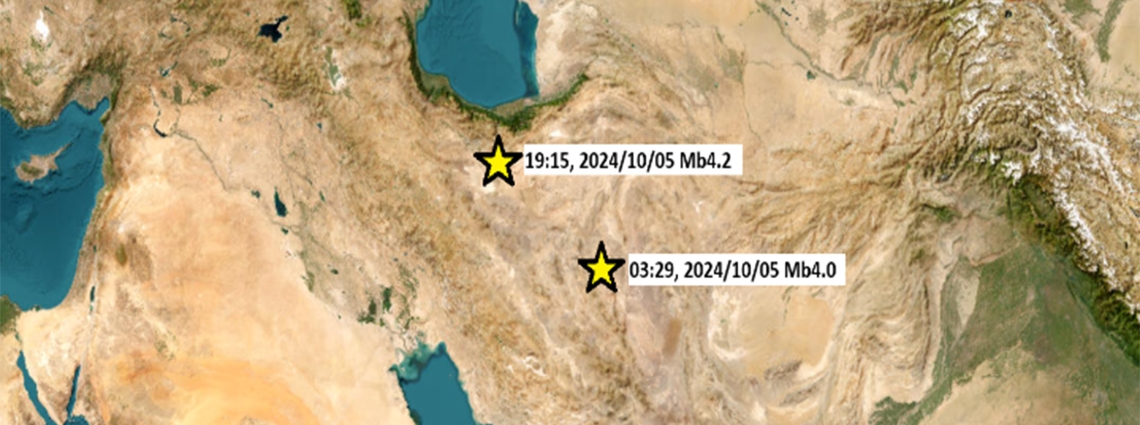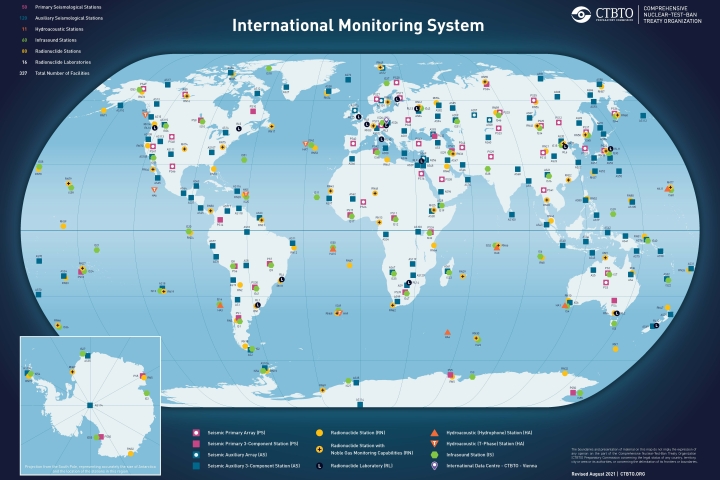CTBTO detects two earthquakes in northern Iran on 5 October
The Comprehensive Nuclear-Test-Ban Treaty Organization's (CTBTO) monitoring stations detected two seismic events, earthquakes, on 5 October 2024 in the northern Semnan province of the Islamic Republic of Iran.
The first event, recorded at 03:29:24 (UTC), had a body wave magnitude mb (IDC) of 4.0 and was located at latitude 32.20, longitude 56.53. Later that day, at 19:15:32 (UTC), a second event was recorded, this time with a magnitude of 4.2 (mb), at latitude 35.37, longitude 52.57.
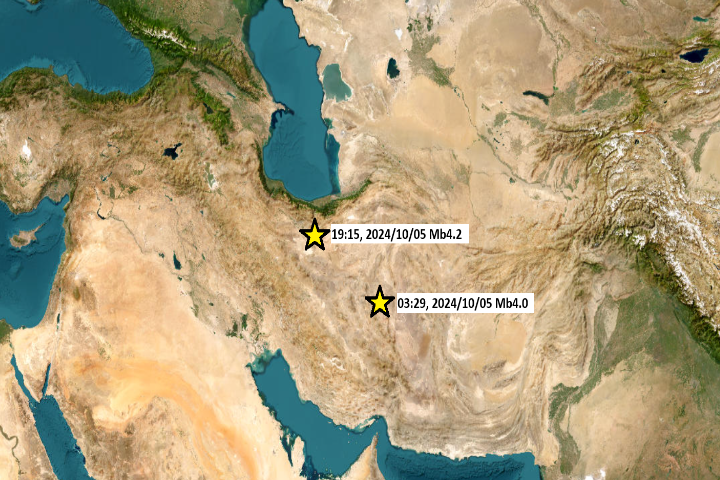
Locations of seismic events in Iran on 5 October 2024
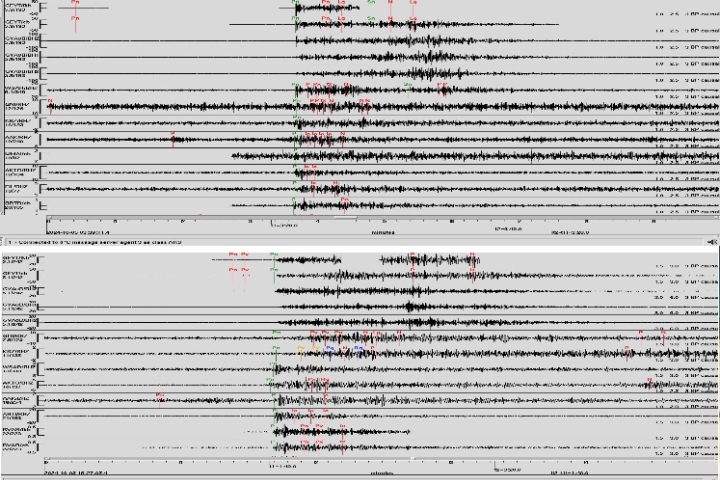
Seismic recordings from two events in Iran on 5 October 2024
“Data gathered by more than 25 stations in our global monitoring network, known as the International Monitoring System (IMS), was analysed by our team in Vienna. The analysis indicated that the two events were consistent with previous earthquakes in this area in Iran,” said CTBTO Executive Secretary Robert Floyd.
Earthquakes with similar characteristics occurred in the region on 15 January 2018 and 25 August 2015, both of similar magnitude (4.1 mb and 4.2 mb, respectively).
The CTBTO will continue to monitor the situation and provide real-time data to all States Signatories, allowing them to conduct their own independent analyses.
Background
The CTBT bans all nuclear test explosions everywhere, by everyone, and for all time. Adherence to the Treaty is nearly universal, with 187 States Signatories and 178 ratifying states. However, to enter into force, the Treaty must be ratified by all 44 States listed in its Annex 2, for which nine ratifications are still required.
The CTBTO has established an International Monitoring System (IMS) to ensure that no nuclear explosion goes undetected. Currently, 306 certified facilities - of a total of 337 when complete - are operating around the world. The data collected by the IMS and shared with States Signatories serves multiple purposes, including disaster mitigation, such as earthquake monitoring and tsunami warning. Additionally, it supports research in various fields, ranging from whale migration to climate change studies to predicting monsoon rains.
9 Oct 2024
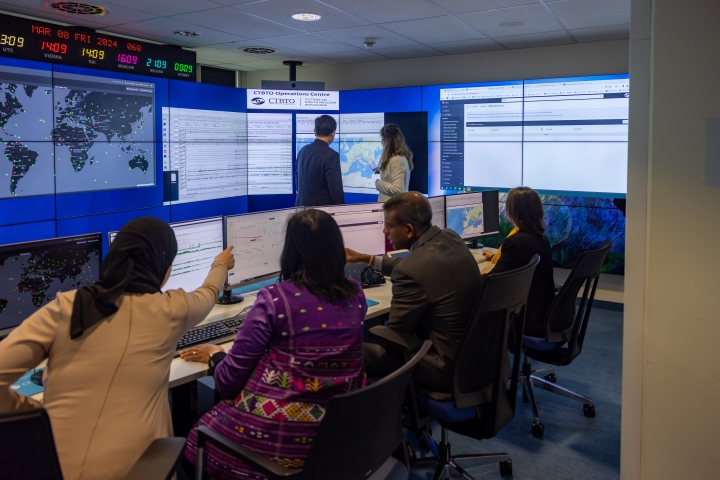
CTBTO's Operations Centre, Vienna, Austria
